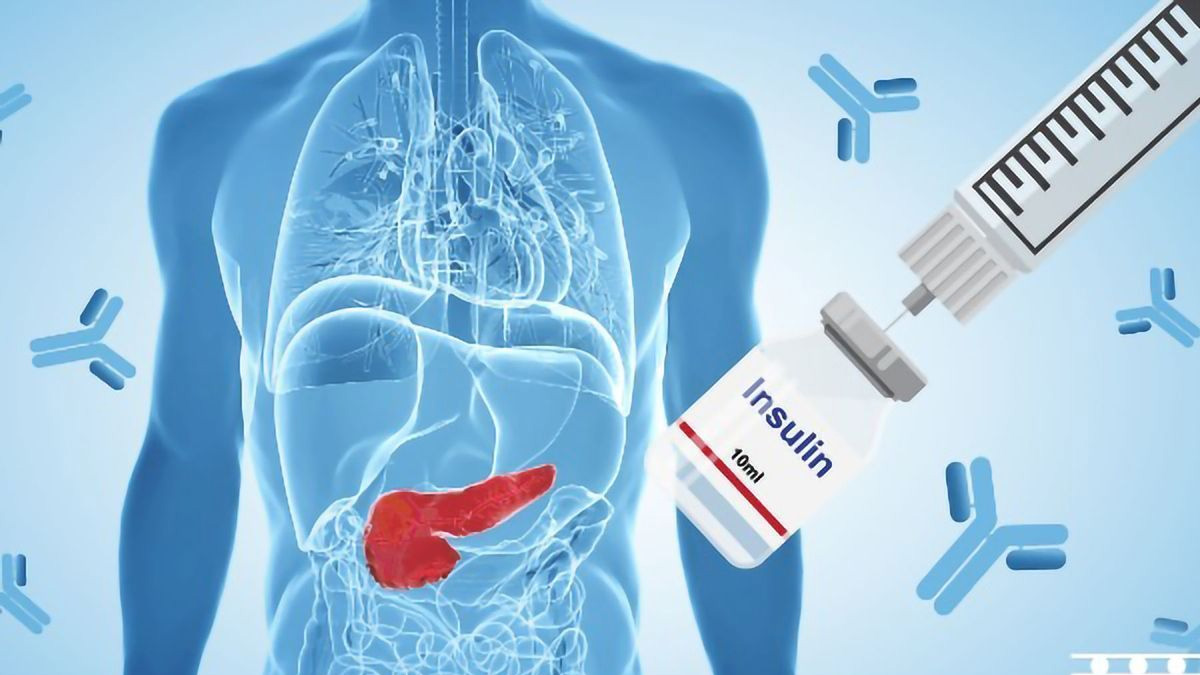The real cause of diabetes is not high blood sugar, but a combination of factors, including Triglycerides and Cholesterol. In this article, you’ll learn why cholesterol and Triglycerides are not the primary causes of diabetes. If you’ve been diagnosed with diabetes, you should begin the process of treatment immediately. Here are some helpful tips on how to manage your blood sugar levels. In addition to managing blood sugar, you should also be aware of other conditions that cause diabetes.
High blood sugar is not the real cause of diabetes
The fact is that there is no single cause of diabetes, and there are multiple ways to deal with high blood sugar. High blood sugar, also called hyperglycemia, is a common problem among people with diabetes. It can be caused by a variety of factors, including not taking enough glucose-lowering medication. If left unchecked, hyperglycemia can lead to serious complications, including diabetic coma.
One of the best ways to control glucose levels is to exercise regularly. Although exercise improves the health of the entire body, it does not address the underlying cause of diabetes. If your blood sugar is consistently high, contact your doctor to discuss your treatment options. A few high readings here and there is not a major cause for concern, but if it persists for a long time, see your doctor.
Another common myth about diabetes is that sugar causes the disease. There is no link between sugar and type 2 diabetes. People who are overweight tend to have a higher risk of developing diabetes because they consume more calories than they need. Sugary foods contain many calories, so you may be gaining weight if you have type 2 diabetes. There are many causes of type 2 diabetes, and you should understand them all. However, you shouldn’t make a choice based on the sugar content in certain foods.
Triglycerides
A recent study suggests that elevated triglyceride levels are associated with an increased risk of developing diabetes and prediabetes. In addition, elevated triglycerides have been associated with inadequate glycemic control in patients with type 2 diabetes. The study used data from the China National HbA1c Surveillance System and multivariate logistic regressions to identify the associations between triglyceride levels and inadequate glycemic control in people with diabetes.
High triglyceride levels are an indication of a faulty insulin production in the pancreas. The insulin produces converts glucose into glycogen, which is then stored in the liver. However, in people with poorly controlled diabetes, insulin levels are too high. Insulin is necessary to convert glucose into energy and stores it in cells. In addition, carbohydrates break down into glucose, which enters the bloodstream. Although carbohydrates are not inherently bad for your health, they should be eaten in moderation. Eating too many carbohydrates may cause triglyceride levels to rise.
However, the study is far from definitive. The authors note that they cannot rule out the role of triglycerides in diabetes. But it is important to understand the role of these lipids in the development of diabetic neuropathy. This research is crucial in defining the role of triglycerides in neuropathy. The study’s findings have a broad impact on the management of diabetes, including lipid-lowering treatments.
Cholesterol
High cholesterol and diabetes often go hand in hand. While the two conditions can be managed by adopting healthy lifestyles and keeping an eye on your cholesterol levels, there are certain things you can do to avoid developing either condition. A healthy diet, regular physical activity, and regular cholesterol checks are all important. This article explores these topics further. Cholesterol causes diabetes and how to manage it. It will also offer tips on how to reduce your risk of developing diabetes.
High cholesterol and diabetes are linked to several different types of heart problems. High cholesterol causes atherosclerosis, a disease of the blood vessels in the heart. High cholesterol can lead to heart disease and stroke. Both of these conditions affect the cardiovascular system. In the case of cardiovascular disease, high cholesterol can cause blockages in the arteries of the lungs, heart, legs, and feet. If your cholesterol level is too high, you may have to take medication to reduce it. If you are concerned about your cholesterol level, you should have your blood tested every year.
Increasing LDL cholesterol is associated with an increased risk of cardiovascular disease in people with diabetes. Low HDL cholesterol reduces the risk of cardiovascular disease. Likewise, increasing HDL cholesterol lowers the risk of diabetes. The researchers analyzed a cohort of more than 45,000 people with diabetes and low HDL cholesterol. Moreover, they found that LDL cholesterol had a significant inverse relationship with HDL cholesterol. Thus, it is important to lower LDL cholesterol levels to reduce the risk of diabetes and cardiovascular disease.
Cushing’s syndrome
A doctor may suspect you have Cushing’s syndrome if you have a number of risk factors, including hypertension, osteoporosis, and diabetes mellitus. Endogenous Cushing’s syndrome affects about one in twenty patients with type 2 diabetes. The prevalence of the syndrome is up to 11% in people with osteoporosis, and it’s even higher in those with an incidentally discovered adrenal mass.
A cross-sectional study design has limitations. Follow-up data is needed to determine causality in a larger Chinese Cushing’s syndrome population. The present study’s sample size is too small to assess whether NEUT% levels are associated with diabetes in this population. Moreover, the results of the study are based on a hospital-based sample and do not reveal a causal relationship between white blood cell levels and diabetes. The authors declare no conflicts of interest.
Glucocorticoid-related impairment of glucose metabolism is a common complication of Cushing’s syndrome, which is associated with significant morbidity and mortality. While some authors define diabetes mellitus in Cushing’s syndrome as a type 2 DM, others refer to it as a specific endocrinopathy. In either case, a pancreatic beta cell is impaired and insulin resistance is increased. Treatment for this condition depends on whether Cushing’s syndrome is in remission.
Treatment for Cushing’s syndrome involves decreasing the cortisol levels in the body. Treatment may consist of several treatments, depending on the cause. Corticosteroids can block the effects of cortisol on the tissues. Medications that block the effects of cortisol are commonly prescribed. Some patients need to change their dosages. It is important to check with your doctor if you’re taking corticosteroids.
Insulin resistance
The effects of insulin resistance go beyond diabetes. It also causes cardiovascular disease. Although there is no single way to prevent insulin resistance, it can be prevented by making dietary and exercise changes. The long-term effects of insulin resistance are not understood, but they have been linked to heart disease and diabetes. Here are some ways to prevent and reverse insulin resistance. But first, understand what insulin resistance is. It is an underappreciated component of metabolic syndrome.
The hormone insulin helps maintain glucose homeostasis by stimulating muscle glucose uptake and suppressing liver glucose production. Insulin resistance is the result of decreased sensitivity to insulin’s metabolic actions. It is also a main feature of cardiometabolic syndrome, a precursor to type 2 diabetes and its cardiovascular complications. For example, increased fatty acid utilization in the heart is a hallmark of diabetes. However, the increased oxygen cost of fatty acid oxidation decreases cardiac efficiency. This is partly a result of mitochondrial uncoupling.
Symptoms of insulin resistance vary widely, depending on the severity of the condition. For example, a condition called prediabetes may cause a darkened skin tone and skin tags. Most people with prediabetes do not develop diabetes symptoms. Eventually, blood glucose levels will reach dangerous levels. Even if you have no symptoms, your doctor will monitor your blood glucose levels and hemoglobin A1C level. Some people develop complications due to diabetes like retinopathy and acanthosis nigricans.
Pancreatic damage
When the pancreas is damaged, blood sugar levels rise and the body’s insulin production is reduced. This condition is often diagnosed as diabetes and may be accompanied by other conditions, such as cystic fibrosis. Diabetes is a complex disease that affects the body’s blood sugar levels. The pancreas is a key part of the immune system, which regulates blood sugar levels. The dysfunction of the pancreas can cause insulin to stop working properly, causing the blood sugar levels to rise too high.
While a diagnosis of diabetes may increase the risk of pancreatitis, it does not guarantee you will develop the condition. Managing your blood glucose and triglycerides is vital to preventing diabetes. Additionally, eating a balanced diet and avoiding smoking will lower your risk of developing pancreatitis. Managing diabetes and its complications is essential to the health of your body, and the prevention of pancreatitis should be a top priority.
Diabetes is a common complication of pancreatic cancer, and early detection is crucial. However, the disease is treatable if detected in its early stages. To treat pancreatic cancer early, doctors may perform imaging tests to detect abnormalities. If the tests show that there is no evidence of cancer, follow-up surgery is unnecessary. However, if diabetes is detected in a patient with an abnormal pancreas, the cancer risk may increase and the patient’s risk of developing the disease increases.

